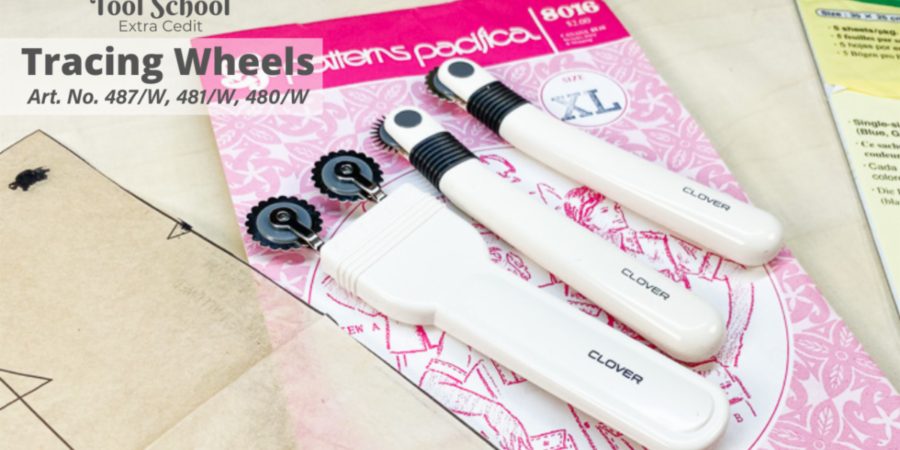Tracing Wheels
By Shannon and Jason
Medieval torture devices? Baking for making those cool cuts in the top of your bread? What exactly are those strange looking
wheelie-pokey-thing-a-ma-bob-tools that come in sewing tool kits and why should I learn to use them? If your first exposure to tracing wheels brought up these questions, you aren’t alone. Tracing wheels are for, just that, tracing pattern pieces. The pointy, sharp tracing wheel is perfect for outlining an existing pattern piece to create a duplicate. In our case, we use it to duplicate those fragile tissue patterns onto patterning paper, freezer paper, or patterning fabric. This keeps us from destroying the tissue pattern pieces with repeated use. Likewise, we have a few vintage patterns that we don’t want to cut up or resize the original pieces. Instead, we use the sharp points to trace the pattern pieces onto other paper or patterning medium for repeated use and resizing. Just lay a piece of old cardboard behind the patterning material and use a back-and-forth motion as you outline the pattern piece. The sharper points of the wheel make a beautifully perforated line you can tear apart or cut along. Label your new pattern pieces and you’re ready to go!

The scalloped tracing wheel is the perfect tool for transferring patterning marks like pleats and darts. Simply position a piece of Clover Chacopy paper between your pattern piece and the fabric (or beneath the fabric depending on the side you are marking) and use a gentle back-and-forth motion to trace your detail lines and transfer the Chacopy paper medium onto the fabric.


The double tracing wheel is a thing of beauty to ensure your fabric pieces are assembled with complete accuracy. While most sewists develop a keen eye for seam allowances, there are times when even the most experienced sewist will want to use this tool. And for new sewists, this tool will save you a lot of heartache while you develop that eye. To use this double tracing wheel, move the two wheels the appropriate amount apart to both trace your pattern piece AND mark the sew line. The further apart the wheels, the further your sew line is from the cut edge of the fabric meaning your seam allowance will be larger. If your pattern comes with a set seam allowance already added into the pattern piece, be sure to check that and set the wheels accordingly. For patterns that do not have a seam allowance on them, the double tracing wheel is a must for adding your seam allowance as you transfer your pattern piece onto the fabric. Even for experienced sewists, this comes in handy by clearly defining the sew line. That way, when you sew the piece together if there is a fit issue, you know for sure it wasn’t because of your assembly but rather an issue with the pattern and you can make alterations accordingly. This is especially valuable if you are making a garment style you aren’t familiar with or a pattern type or brand you haven’t used before. Better safe than sorry!
Despite their first impressions, we think you will quickly discover these tracing wheels are a valuable part of any sewist’s kit. Watch our Tool School Extra Credit video and we think you’ll agree.
